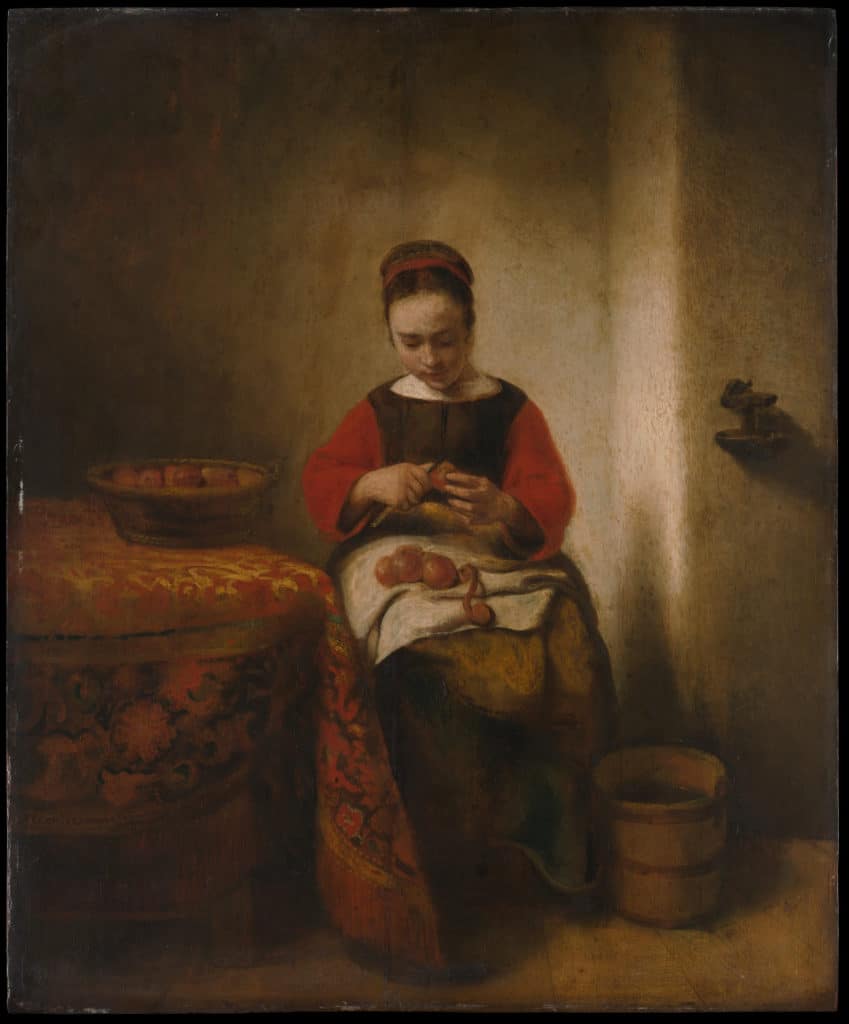Student Reflection: Learning Outside of the Classroom with a Trip to The Met
A beautiful spring Saturday was the perfect time to walk around New York City and check out the Metropolitan Museum of Art as part of Associate Professor of English Chloe Wheatley’s “Food Writing in the English Renaissance” course.

I am a senior majoring in English at Trinity, and one requirement for the major is to complete at least two courses that focus on the pre-1700s era. The “Food Writing” course sounded like an interesting and fun way to finish off my requirements for the major. Who doesn’t love talking about food?
The “Food Writing” course aims to explore the relationship between literary and culinary practice and to understand the role that food played in shaping the early modern English culture. Some topics we are covering in the class this semester include: the early modern diet, banquets, gluttony, festivity, rule of commerce, recipe reading, digestion, and the joys of drink.
In preparation for our visit to The Met, the students in the class were asked to look at the “In Praise of Painting: Dutch Masterpieces at The Met” exhibition online and pick out a painting related to food that seemed interesting. Our assignment was to learn what we could about our chosen painting by reading the website description and doing our own research, in order to be prepared to give a brief presentation to the class during our walking tour of the exhibit.

I picked the painting, “Young Woman Peeling Apples,” by Nicolaes Maes, for my presentation. What drew me to this oil on wood painting was the beautiful Turkish carpet that is placed over the table, where a woven basket full of apples is sitting. The woman in the painting is carefully peeling apples with a wooden tool. I liked the use of light, soft contours, and the inclusion of the varying shades of red. “Previous painters had made housemaids the subject of comic or sexually suggestive scenes,” according to The Met. “With this sensitive and ennobling depiction, Maes made an important innovation.”
The striking painting was even more beautiful in front of me at the museum in real life. It was hard to truly see the details and specifics of the painting online. I could also carefully study the woman’s facial expression up close. She seemed to be in a meditative, peaceful, and almost dreamlike state, which I did not pick up on before.

We also looked at several other still life paintings, which my classmates had studied and presented. For example, Abraham van Beyeren’s “Still Life with Lobster and Fruit” included intricate details that made the painting look like a photograph. We stopped by the Frans Hals painting, “Merrymakers at Shrovetide,” which depicted a banquet celebration. There was so much to look at in the painting, like the people’s faces, the items on the table, and many background features. Willem Claesz Heda’s “Still Life with Oysters, a Silver Tazza, and Glassware” had some of the finest detail I have ever seen in a painting, down to the lemon rind hanging delicately off a silver platter. In the context of our class, it was fascinating to see both the food items and major themes we have been discussing in class such as gluttony, class, and the domestic life of women shown through paintings.
This field trip with Professor Wheatley’s class is just one of the ways in which being a student at Trinity has encouraged me to learn outside of the classroom. I am grateful for the opportunities I have had to study away in Barcelona my junior year, to volunteer for local philanthropic organizations like My Sister’s Place with my sorority, to work as a career development intern for Trinity, and to write news stories this semester for the college’s Office of Communications. All of these have provided valuable real-life experience and lessons that will useful for me beyond the academic setting.
